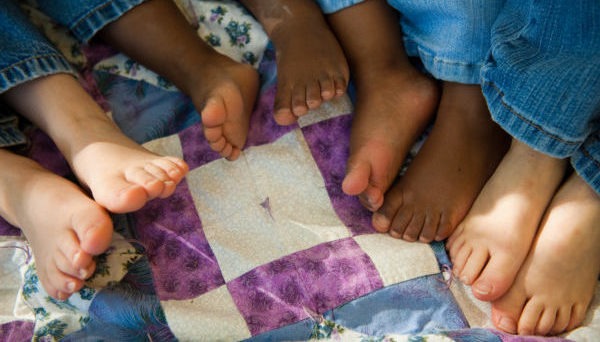
Before the beginning of Everyday Epics, when my family of four was living in Spain, we heard a story we couldn’t forget. And we became a family of six.
The story we couldn’t forget is about children without parents, communicable disease and abject poverty, about people who have lost everything except their will to live. We had actually been hearing it, or snatches of it, all our lives, but it somehow became real to us while we were in Spain.
Of course, it didn’t happen overnight. We already had plenty of other things on our mind. As Americans living in northeast Spain from 2007-08, my wife, Angela, and I were spending half of every weekday learning Spanish, while our two pre-school-aged kids learned Catalan at a neighborhood school two blocks from our apartment. In the afternoons, Angela picked up the kids from school and I helped make short films at a studio in Barcelona.
We had moved to the shores of the Mediterranean looking for adventure. You know, learn a language, meet new people, see cool things, eat great food. (I still dream about Spanish bread — hot out of the oven and smothered in butter.) But I think what we were really looking for was a new language for life.
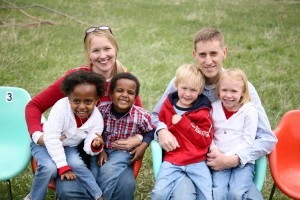
I had recently survived a major crisis of faith, a deconstruction of how I saw the world that felt more like a dark-night destruction, and I was still picking through the pieces of the proverbial rubble. I had spent the last 18 months being bitter and angry. When I wasn’t bitter and angry, I was emotionally unavailable. God only knows how my family survived me.
Eventually I got tired of wielding my cynicism like a Toledo broadsword. Thanks to the help of a counselor-turned-friend, I felt I was ready for a journey of reconstruction, and I chose to begin it on the other side of the Atlantic. It was in Spain, far from home, far outside my comfort zone, that I started to see my faith in a new light. For better or worse, my wife got dragged through the same process, as well.
Somewhere between the de- and re-construction of my faith (though who can say either process is ever fully completed for any of us?), I stumbled across a message that was new to me, though it was certainly not new. The more I considered it, the larger it grew in my mind and heart, and the more I began to see its urgent applicability to the world in which I lived.
The message concerned what has been called “the kingdom of God” inaugurated by the rabbi Jesus of Nazareth. “Kingdom” can be helpfully translated as “administration,” “rule,” “reign,” “revolution” or “dream.” I like to think of it as a “reality” or an “epic.” Where the kingdom is present, heaven and earth meet, everything is made right, everything is as it should be, everything is as it was created to be. The potentiality of the kingdom reverberates throughout history, at times a faint echo, at others a resounding shout, reaching all the way to our world today.
As followers of Jesus of Nazareth, we had heard his message about “the kingdom” countless times, and shared it with others hundreds of times, yet we began to see it not as a one-dimensional set of propositions, but as a multi-dimensional, many-splendored, living reality embedded in the very text by which we had been trying to live our lives. “Now is the time,” Jesus said. “The kingdom of heaven is at hand. Repent and believe the good news.” We began to hear in those words Jesus the prophet of YHWH claiming to be a king, heralding the arrival of a new age on earth, a new chapter in the continuing story of the ages. Jesus’ humanity, his life and his ministry began to matter to us as much as his divinity, his death and his resurrection. By extension, what happens to “the least” of God’s children during their sojourn on this beautiful, marred planet suddenly began to matter to us in a way that it hadn’t before. Somehow we began to believe we had a part to play in the epic story of sacrifice and redemption embodied by Jesus.
That left us with an uncomfortable question: “What are we going to do about it?” It was one thing to think differently about something, but another thing entirely to live differently, to open our lives to the possibilities born out of those thoughts.
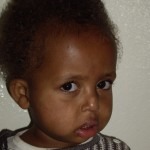
It’s hard to pinpoint exactly when our hearts opened to the possibility of adopting our two youngest children. A Scripture verse became especially meaningful to Angela. We got a random email about adoption from some friends. We listened to a few podcasts from a remote conference. Mostly, we had a growing awareness of generational plagues and titanic suffering in places we had only seen on television.
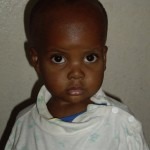
The tipping point was probably reading There is No Me Without You by Melissa Fay Greene. It tells the story of Haregewoin Teferra, a middle-class Ethiopian widow who accidentally ended up running a refuge for AIDS orphans. Angela and I had been struggling with where we might adopt from — there were so many needs in Sierra Leone, Haiti, Guatemala, China, even in the United States, but somehow that book imprinted itself and Ethiopia’s 5 million orphans on our hearts. Now we know why. Our two youngest kids were there, waiting for us to come take them home.
I traveled to Africa for the first time later that summer, spending a little less than a week in Accra, Ghana. Apart from a few brief glimpses of abject poverty during trips to Mexico, it was my first experience of the “developing world” — spotty electricity and no running water amidst extraordinary hospitality. I got to ride the street-signless, pot-hole-filled dirt roads of Accra in 12- or 15-passenger “taxis” that haggle their shockless frames from unmarked stop to unmarked stop. I loved every minute of it.
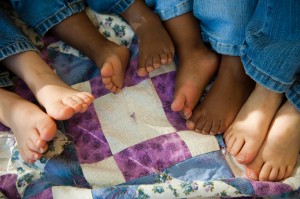
After my trip to Ghana in September 2007, Angela entered research mode. She ate, drank and slept adoption agency websites and adoptive parent message boards. One afternoon, I was in between metro rides in Barcelona when Angela called my cell phone. I remember pausing in the doorway of a Gothic-looking church, hearing Angela say she had just heard about a waiting boy and girl who were found orphaned on the street in Addis Ababa. I’m not someone who often experiences the mystical, but at that moment I heard, not audibly, but deep inside me, “Those are your kids.” I still get chills when I think about it. To me, that’s when we became a family of six. That’s when the story of two toddlers, previously separated from us by a sea, a continent and a language, became part of our story and we a part of theirs.
We returned to the States sooner than we had originally planned in order to start our official adoption paperwork. The next nine months were a blur that we survived rather than patiently endured. It was one application, evaluation, security clearance and fundraiser after another, until we finally set off on our twenty-some hour marathon flight to Addis Ababa, Ethiopia, to meet our kids.
Life before our two youngest seems a distant memory. It’s been more than three years now since we brought them home. We are a family of six.
If you’d like to more details and want to follow all the twists and turns of our adoption story, visit Angela’s blog.


